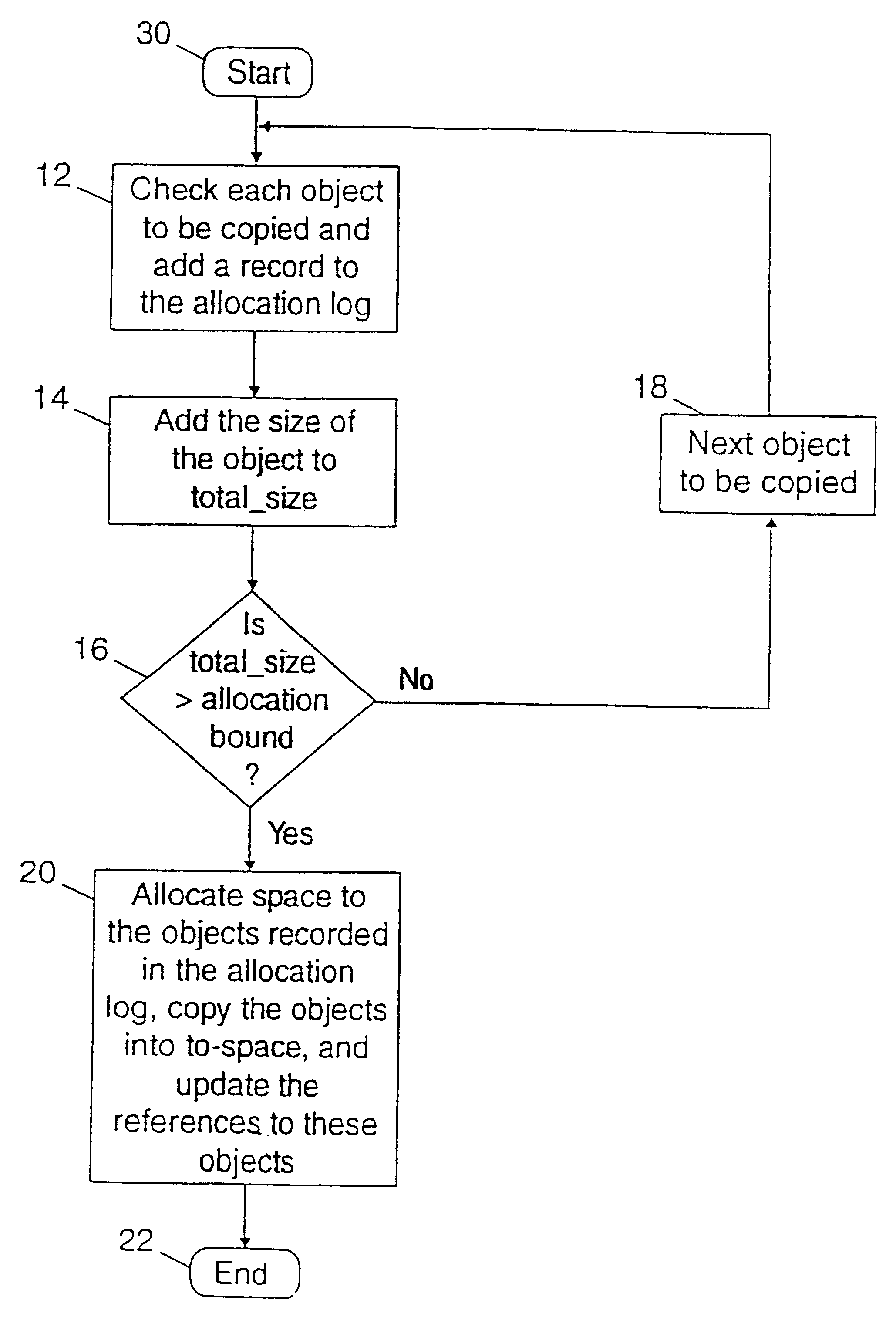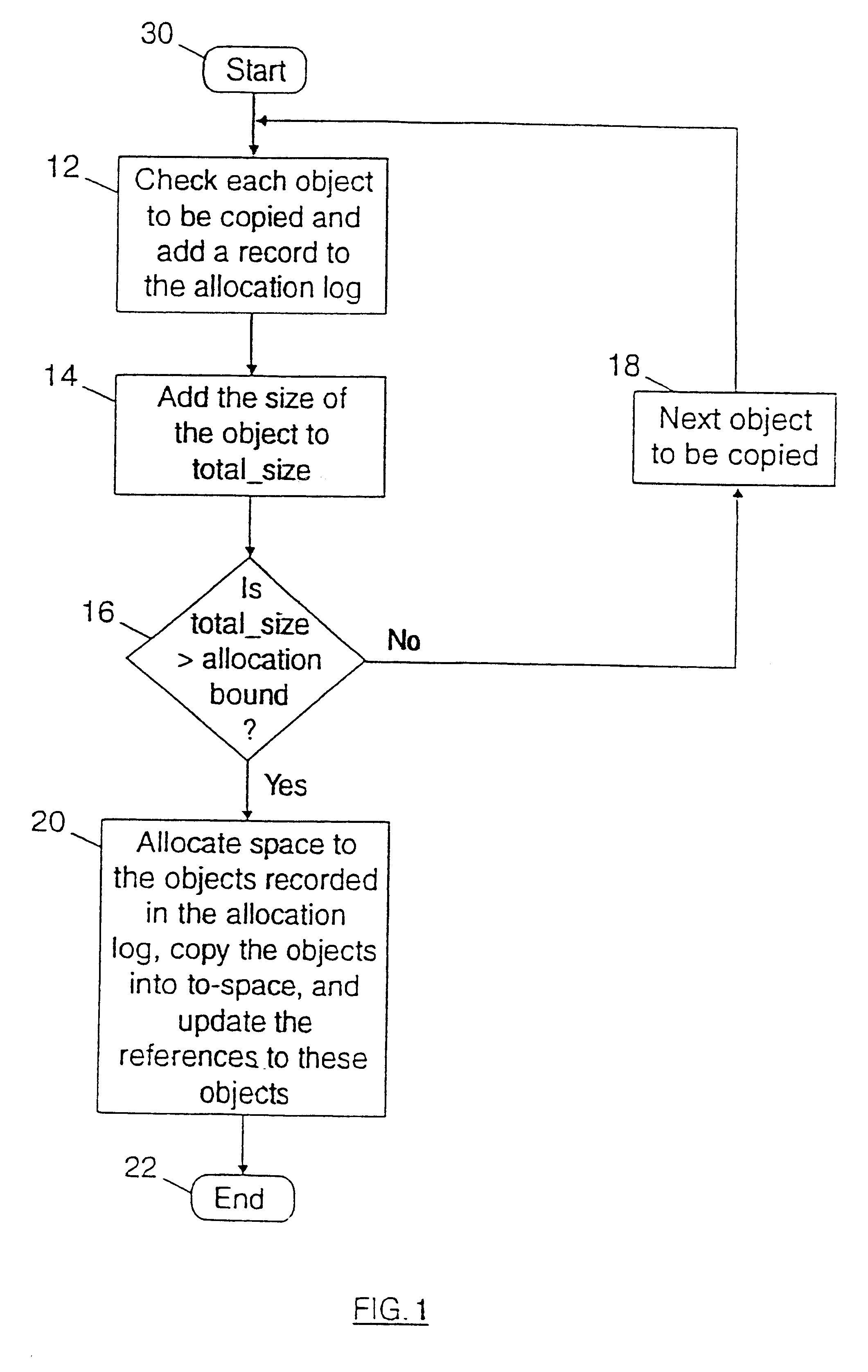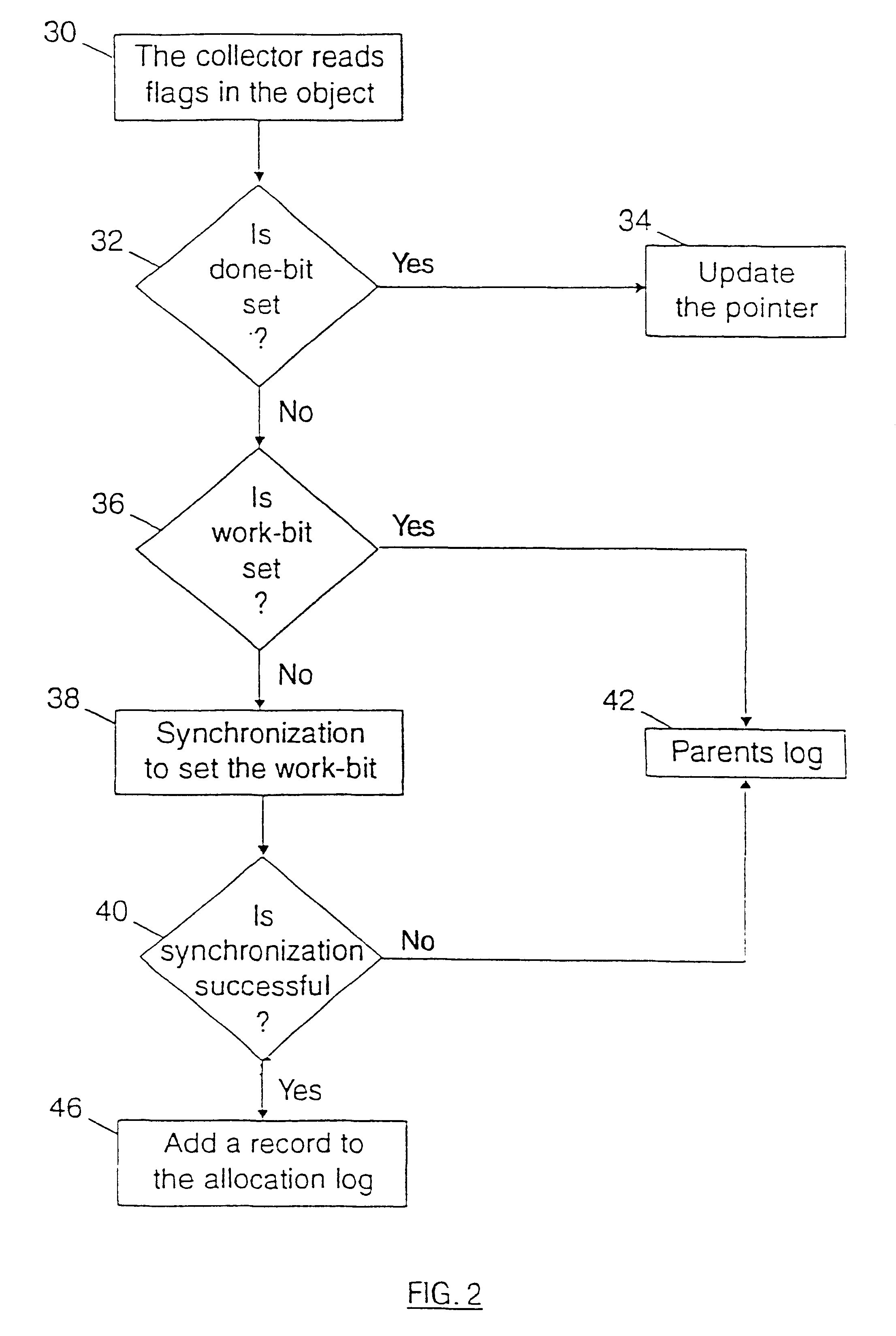Method of delaying space allocation for parallel copying garbage collection
a garbage collection and space allocation technology, applied in the field of delaying space allocation for parallel copying garbage collection, can solve the problems of ineffective collection, waste, and inability to reach garbage objects from the root set, and achieve the effect of low contention
- Summary
- Abstract
- Description
- Claims
- Application Information
AI Technical Summary
Benefits of technology
Problems solved by technology
Method used
Image
Examples
Embodiment Construction
The present invention is implemented in a data processing system wherein the memory is divided in a current area (from-space) used by at least a program thread during current program execution and a reserved area (to-space), and wherein a copying garbage collection is run in parallel by several collector threads
The main idea of the invention is to use the difference between a regular allocation performed by the application program and the special allocation performed by a collector thread. Indeed, when the application program allocates, the space must be assigned immediately since the heap manager cannot tell what the program does with the allocated space next. Conversely, the collector thread knows exactly what is the next step, and thus, the allocation may be delayed.
Accordingly, after starting the space allocation operation (30), each object defined by a list of pointers is checked by the collector thread in charge and a record is added to an allocation log (12) as illustrated in...
PUM
 Login to View More
Login to View More Abstract
Description
Claims
Application Information
 Login to View More
Login to View More - R&D
- Intellectual Property
- Life Sciences
- Materials
- Tech Scout
- Unparalleled Data Quality
- Higher Quality Content
- 60% Fewer Hallucinations
Browse by: Latest US Patents, China's latest patents, Technical Efficacy Thesaurus, Application Domain, Technology Topic, Popular Technical Reports.
© 2025 PatSnap. All rights reserved.Legal|Privacy policy|Modern Slavery Act Transparency Statement|Sitemap|About US| Contact US: help@patsnap.com



